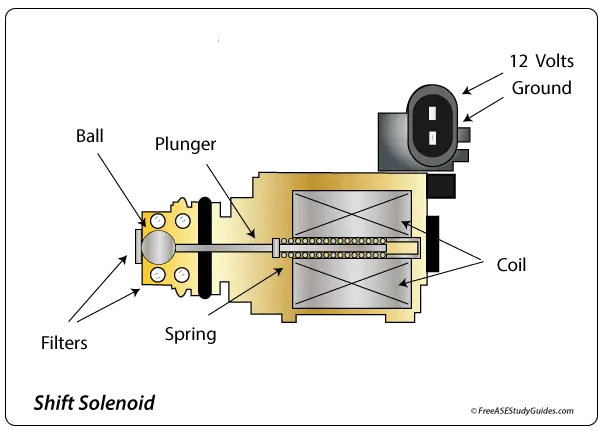Transmission Shift Solenoids
Shift solenoids are actuators used by electronically controlled transmissions to control fluid flow.

Standard on/off solenoids have only two positions, either on or off. They consist of a spring-loaded plunger wrapped with a coil of wire that, when energized, draws the plunger inwards, either opening or closing a hydraulic circuit. When power is removed from the solenoid, the plunger is pushed by a spring to its normal position. Depending on the transmission, a solenoid can be normally open or closed.

Shift solenoids can be controlled by the circuit's ground or power side. On some transmissions (usually older), the solenoid is powered by a 12 V signal from the (TCM) transmission control module. Most transmissions control the solenoid from the ground side by pulsing the ground circuit on and off.
For instance, if there were two solenoids, the transmission activates solenoid A for first gear, both solenoids for second gear, only solenoid B for third gear, and neither of the two for fourth. Solenoids are actuators, devices the transmission control unit activates to achieve the desired result mechanically. The TCM activates them based on inputs from both engine and transmission sensors.
Shift Solenoid Diagnosis

The diagnosis begins with a scanner and a DMM. A scanner identifies the faulty solenoid or it's a related circuit. If the scanner described a high-power circuit code, check the solenoid's ground side and follow the flow chart. If there's a low power code, use the DMM to check the solenoid's power feed. Automatic transmissions use two or three solenoids and turn them on and off at different times to achieve different gears.